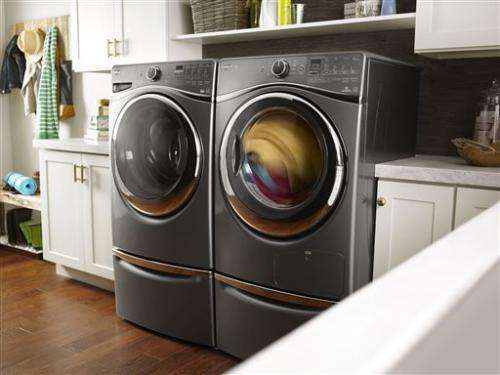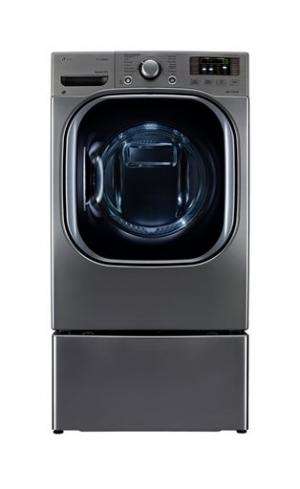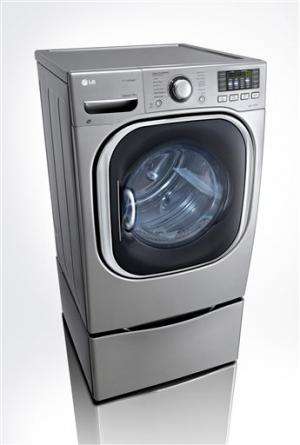This photo provided by Whirlpool shows the Whirlpool Duet Front Load ENERGY STAR laundry pair, including the HybridCare Dryer, in a laundry room. For the first time in six years, Energy Star certification, a widely respected seal of approval for energy efficiency, has been expanded to include a new major household appliance. Dryers, perhaps the last of the major household appliances to be included in the Environmental Protection Agency's program, will be available in 45 Energy Star models throughout the country starting Presidents' Day weekend, according to the EPA. (AP Photo/Whirlpool)
For the first time in six years, Energy Star certification, a standard seal of approval for energy efficiency, has been expanded to include another major household appliance.
Clothes dryers, perhaps the last of the major household appliances to be included in the U.S. Environmental Protection Agency's program, became available in 45 Energy Star models starting Presidents' Day weekend, according to the EPA.
"Dryers are one of the most common household appliances and the biggest energy users," said EPA Administrator Gina McCarthy.
While washing machines have become 70 percent more energy-efficient since 1990, dryers—used by an estimated 80 percent of American households—have continued to use a high amount of energy, the agency says.
The Energy Star program is designed to help consumers' help save money and protect the environment by curbing energy consumption.
"Refrigerators were the dominant energy consumer in 1981. Now dryers are the last frontier in the home for radical energy conservation," said Charles Hall, senior manager of product development for Whirlpool.
Energy Star-certified dryers include gas, electric and compact models. Manufacturers offering them include LG, Whirlpool, Kenmore, Maytag and Safemate.
All of the energy-efficient models include moisture sensors to ensure that the dryer does not continue running after the clothes are dry, which reduces energy consumption by around 20 percent, the EPA says.
This photo provided by LG Electronics shows the LG EcoHybrid Dryer. It is the first available in the U.S. to combine conventional drying with a heat pump to reduce energy by recycling heat, ultimately saving up to 53% more energy than conventional dryers. (AP Photo/LG Electronics)
In addition, two of the Energy Star-approved models—LG's EcoHybrid Heat Pump Dryer (model DLHX4072) and Whirlpool's HybridCare Heat Pump Dryer (model WED99HED)—also include innovative "heat pump" technology, which reduces energy consumption by around 40 percent more than that, the EPA and manufacturers say.
Heat-pump dryers combine conventional vented drying with heat-pump technology, which recycles heat. The technology, long common in much of Europe, is similar to that used in air conditioners and dehumidifiers.
Although Energy Star models can cost roughly $600 more than comparable standard models, Hall said the higher cost is more than balanced out by energy savings and up to $600 rebates offered by government and utility incentive programs.
This photo provided by LG Electronics shows the LG EcoHybrid Heat Pump Dryer. It was recently recognized by the U.S Environment Protection Agency (EPA) with the 2014 ENERGY STAR Emerging Technology Award for its revolutionary energy-efficient technology, reducing energy usage and greenhouse gas emissions while still offering users outstanding drying performance. (AP Photo/LG Electronics)
But the real impact will be felt once the transition to Energy Star models is complete. According to the EPA, if all the clothes dryers sold in the U.S. this year were Energy Star-certified, it would save an estimated $1.5 billion in annual utility costs and prevent yearly greenhouse-gas emissions equal to more than 2 million vehicles.
To earn the Energy Star label, products must be certified by an EPA-recognized third party based on rigorous testing in an EPA-recognized laboratory.
© 2015 The Associated Press. All rights reserved.























